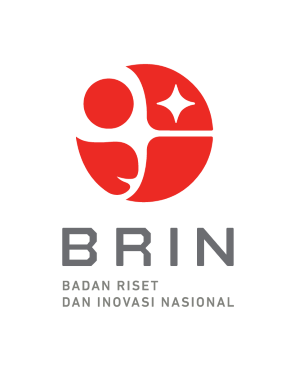ANALISIS KANDUNGAN GIZI DAN UJI HEDONIC PADA ABON TULANG IKAN BANDENG
Abstract
Milkfish products without thorns are processed that separate bones from fish meat so that barbed milkfish products are produced (BATARI). Fish thorn waste has not been utilized optimally and has the potential to pollute the environment, even though this waste can be used as shredded fish with high economic value. Shredded products will be received by the public if there is nutritional value information contained in shredded products. This study aims to determine the nutritional content (Proximate) and the percentage of panelists' level of preference for milkfish bone shredded products (hedonic). This research was carried out on March 2 – June 23, 2022, at the UMI Entrepreneurship Laboratory Laboratory. And proximate analysis of fats, proteins and at the Makassar Health Laboratory Center. The results of the shredded proximate test study based on bone type, the highest fat content was shredded fine bone (A) of 18.78%, followed by Hard bone (B) of 11.89% and the lowest in tu lang mix (C) of 9.83%. The highest protein content was found in shredded fine bone (A) of 29.56%, followed by mix bone (C) of 23.97% and the lowest in Hard Bone (B) of 14.8%. The highest calcium content value was found in shredded Hard Bone (B) at 20374.97 ug, followed by mixed bone (C) of 12754.52 ug and the lowest shredded fine bone (A) of 1384.93 ug. Organoleptic Test Results with Appearance Parameters, Panelists chose shredded A with a score of 71.4, followed by Shredded sample B (28.6%). and shredded sample C (42.9%). the level of preference for aroma in shredded B (57.1%) in shredded A (37.5%), and C ( ). Taste in shredded B (57.1%) in shredded A (37.5%), and (C). and texture in shredded B (57.1%) in shredded A (37.5%), and C conclusion The fat, protein and calcium content meet the quality requirements of shredded fish according to SNI. The level of consumer acceptance of color is more dominant in shredded soft bones while the smell, taste and texture are preferred in shredded hard bones
References
Alhana. 2011. Analisis asam amino dan pengamatan jaringan daging fillet ikan patin (Pangasius hypophthalmus) akibat penggorengan. [Skripsi]. Bogor: Fakultas Perikanan dan Ilmu Kelautan, Institut Pertanian Bogor.
Almatsier, S. 2006. Prinsip Dasar Ilmu Gizi. Gramedia Pustaka Utama: Jakarta
Almatsier, S. (2001). Prinsip Dasar Ilmu Gizi. Jakarta: PT. Gramedia Pustaka Utama.
Amran, P.2018. Analisi Perbedaan Kadar Kalsium (Ca) terhadap karyawan teknis produksif dengan karyawan administrasi pada persero terbatas semen tonasa. Jurnal Media Kesehatan
Amir, N., Metusalach, M., & Fahrul, F. (2019). Tingkat Kesukaan Konsumen Dan Kualitas Organoleptik Produk Olahan Ikan. Jurnal Ipteks Pemanfaatan Sumberdaya Perikanan, 5(9). Https://Doi.Org/10.20956/Jipsp.V5i9.4311
Byrd-Bredbenner C, Abbot JM, Wheatley V, Schanaffer D, Bruhn C, Blaock L. 2008. Risky eating behaviors of young adults – implication for food safety education. Journal of the American DieteticAssosiation 108(3):549-52
Dinas Kelautan dan Perikanan (DKP) Provinsi Sulsel. 2020. Laporan Statistik Perikanan Sulawesi Selatan tahun 2019. Makassar
DeMan, M John. 1997. Kimia Makanan. Bandung : ITB
Huthaimah, Yusriana, Martunis. 2017. Pengaruh jenis ikan dan metode pembuatan abon ikan terhadap karakteristik mutu dan tingkat penerimaan konsumen. Jurnal Ilmiah Mahasiswa Pertanian Unsyiah. 2(3): 244- 254.
Kementrian Kesehatan (2019. Peraturan Menteri Kesehatan tentang Angka Kecukupan Gizi yang Dianjurkan untuk Masyarakat Indonesia.. https://peraturan. bpk.go.id/Home/Details/138621/permenkes-no-28-tahun-2019 di unduk 1 Agustus 2022.
Mareta DT. 2019. Hedonic test method for measuring instant pindang seasoning powder preferences. Journal of Science and Applicative Technology. 3(1):
Piliang, W.G. dan S. Djojosoebagio. 2002. Fisiologi Nutrisi. Vol. I. Edisi Ke-4. IPB Press. Bogor Purnomiwati, I.2006. Bandeng Duri Lunak. Kanisius. Yogyakarta
Rosiani, N., Basito, Widowati, E. 2015. Kajian Karakteristik Sensoris Fisik Dan Kimia Kerupuk Fortifikasi Daging Lidah Buaya (Aloe Vera)
Sulthoniyah STM, Sulistiyati TD, Suprayitno E. 2013. Pengaruh suhu pengukusan terhadap kandungan gizi dan organoleptik abon ikan gabus (Ophiocephalus striatus). THP Student Journal. 1(1):33-45.
Trilaksani, W., Salamah, E., dan Nabil, M. 2006. Pemanfaatan Limbah Tulang Ikan Tuna Thunnus sp. sebagai Sumber Kalsium dengan Metode Hidrolisis Protein. Buletin Teknologi Hasil Perikanan 9 (2): 34-45.
Winarno, FG. 2008. Kimia Pangan dan Gizi Edisi Terbaru. Bogor: M-Brio press
Copyright (c) 2023 JOINT-FISH

This work is licensed under a Creative Commons Attribution 4.0 International License.










